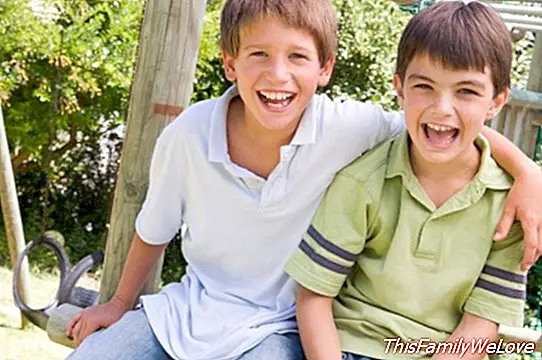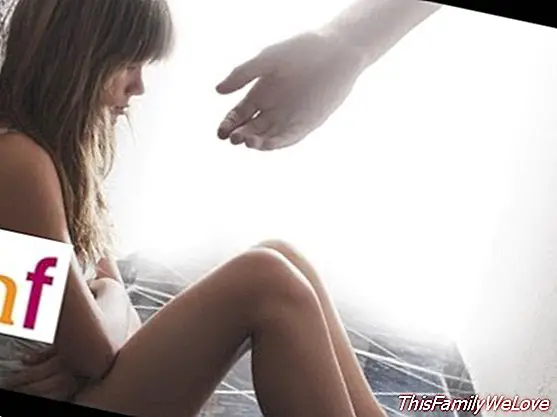The best friend in childhood


Human beings are social by nature. From birth, we seek the company of others and seek contact with nearby figures. People need to create bonds and generate links, since interaction with others allows us to develop. Relationships with others are essential for well-being, social and emotional development, and learning.
The best friend in childhood it plays a fundamental role. It is important to respect and promote the figure of the best friend in childhood, but we must ensure that children do not focus only on this figure. The best friend in childhood becomes a support that helps them face the world and makes them understand different situations.
Friendship in childhood
Friends play a crucial role in all ages and especially in childhood and adolescence, it is crucial for social, emotional and affective development. The friend teaches, educates and contributes to the development of one's identity. The friend becomes support, companion, accomplice, confidant, but also rival and, sometimes, enemy. The friends constitute a group of equals, different from the family group, where each child will have to create their own role, learn to relate and understand the ins and outs of relationships.
The best friend appears at 6 or 7 years
In a first stage, friends are those boys and girls who play with the child. There are usually not many distinctions between some friends and others, the role of the best friend, if there is one, can change from one week to another.
Around the age of 6-7, one begins to forge the figure of the best friend. The best friend is that special friend among all the friends, the one who shares the time, the games, the one whose company is the preferred one. As they grow, the role of the best friend intensifies. This figure will play an important role in social, emotional and affective development, it is the sustenance of self-esteem and the determinant of social skills. The best friend will be the first intimate relationship with someone who is not of the family, without there being kinship ties. The relationship with this best friend will determine the pattern in future social relationships.
The emotional bond with the best friend
 Loading the video ....
Loading the video ....The best friend is characterized by the strong emotional bond of union. The best friend brings company to the child, but not only a physical company, but also an emotional company. This emotional company is more important and will be the one that determines the link.
Children are immersed in a process of development, within this process their identity is to be developed and their self-esteem is fragile. The best friend becomes an equal who goes through similar experiences and with whom the children identify and feel understood. In addition, having a better friend makes the children feel worthy of that esteem and in this way their self-esteem is nurtured. However, this relationship of friendship has several dangers, in the same way that nurtures self-esteem, when it is fragile can create dependence.
Advantages and Disadvantages of having a best friend
The best friend becomes an inseparable companion. For a child, his best friend makes it easier for him to face the world, it is a company that allows them a support to be and a support to understand and to face different social situations.
Advantages of having a best friend
What does the best friend of the children bring?
1. It plays an important role for social and emotional development.
2. They learn to establish norms and to fulfill them.
3. Develop your empathy and ability to think for the other.
4. It supposes a support that clothes him and allows him to expose himself without fear, developing his self-esteem.
5. Develop your social skills. The child will try to convince the friend, avoid getting angry, seek his attention, etc.
6. Develop values like fellowship, cooperation, solidarity, etc.
Disadvantages of having a best friend
What are the negative aspects of children's best friend?
1. It can cause excessive dependence.
2. Limitation of their relationships, avoid relationships with other children. Some children close too much and create an absolute dependence on their best friend.
3. They can exclude other children and deprive themselves of other social relationships that enrich their social development.
4. In the same way that it promotes self-esteem, it can damage it, since the child can perceive that without his friend he is not able to cope.
5. The best friend helps to experience emotions like anger, jealousy, and even spite.
6. Alliances too rigid hinder the moral development of the child.
The impact that the best friend produces in childhood
- Social impact of the best friend. The best friend is the first special relationship that children establish with someone who does not belong to their family nucleus.This relationship involves the development of social skills that allow you to create a role within the interaction. In the family the role is imposed from birth, the child is the son of ... brother of ... nephew of ... grandson of ... etc. but in the interaction with the best friend the child will have to build his role as a friend, for which different social skills will be set in motion.
Immersed in this relationship the child will create a very special interaction pattern, this pattern is based on the affects and defines the behaviors that the child performs in the relationship. This pattern will determine the future social relationships of the child, it is a learned pattern that will tend to repeat itself.
- The emotional impact of the best friend. The ties established in childhood with friends will have a strong emotional impact on the child. The best friend shares much more than games, there are many emotions that are experienced with childhood friendships; from love, affection, joy, anger, jealousy, anger, etc ... All this emotional range experienced in the heart of this relationship is necessary for the emotional development of children. Through the relationship with the friend, they will experience different emotions and develop strategies to regulate them.
It is important to respect and promote the figure of the best friend, but we must ensure that children do not focus only on this figure. Having a best friend is positive, but having only that friend is dangerous and can harm your self-esteem, creating an affective dependence that tends to repeat itself.
Celia Rodríguez Ruiz. Clinical health psychologist. Specialist in Child and Adolescent Pedagogy and Psychology. Director of Educa and Learn.
Author of the collection Stimulate the reading and writing processes.




